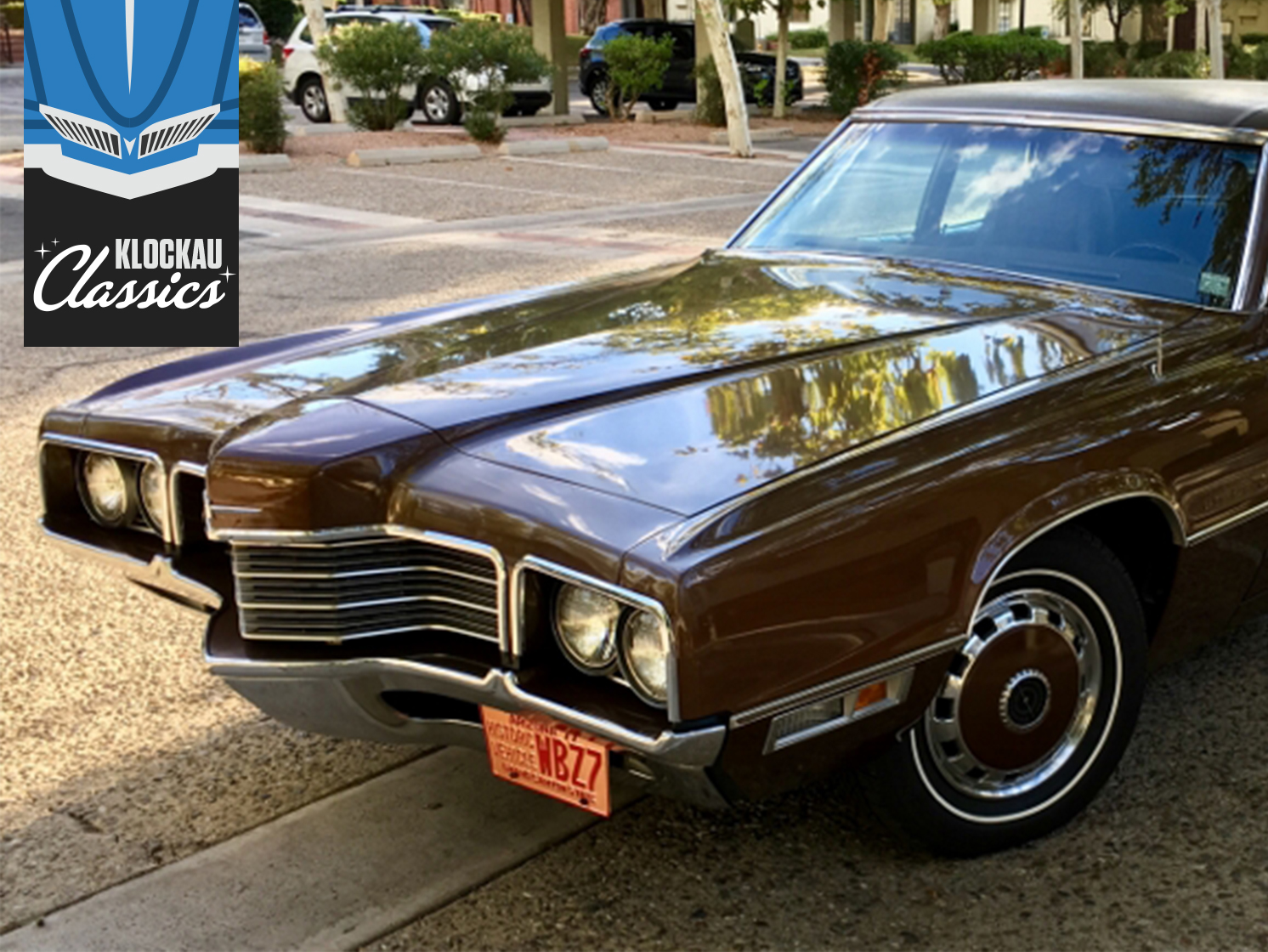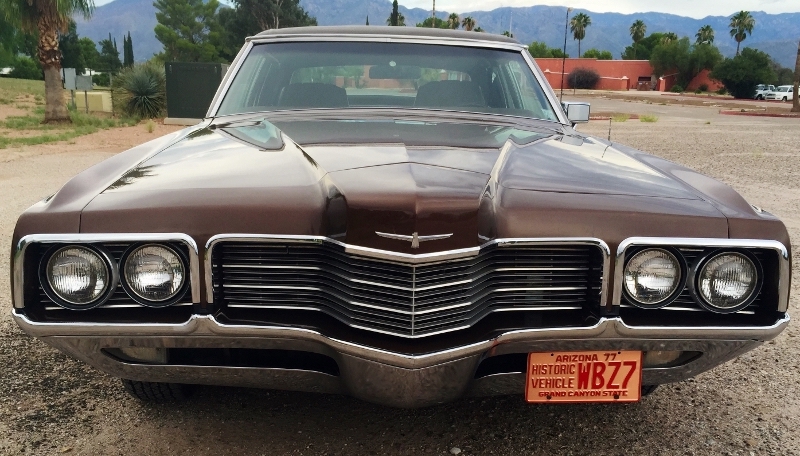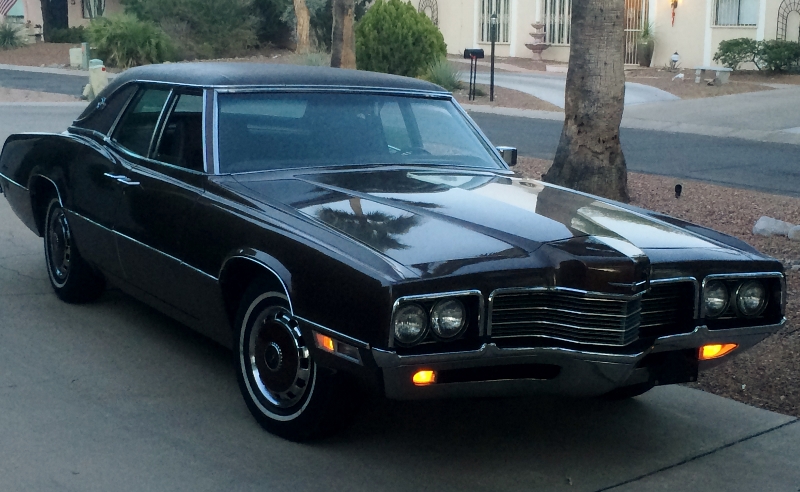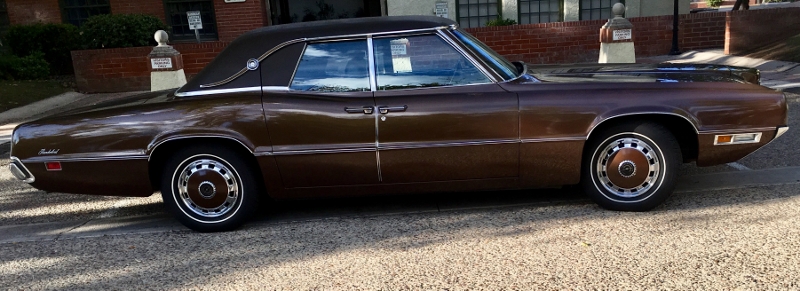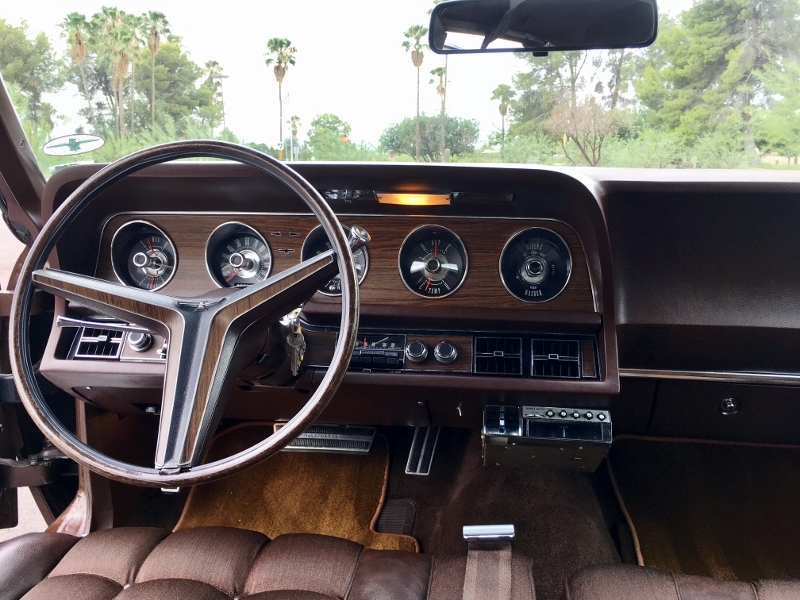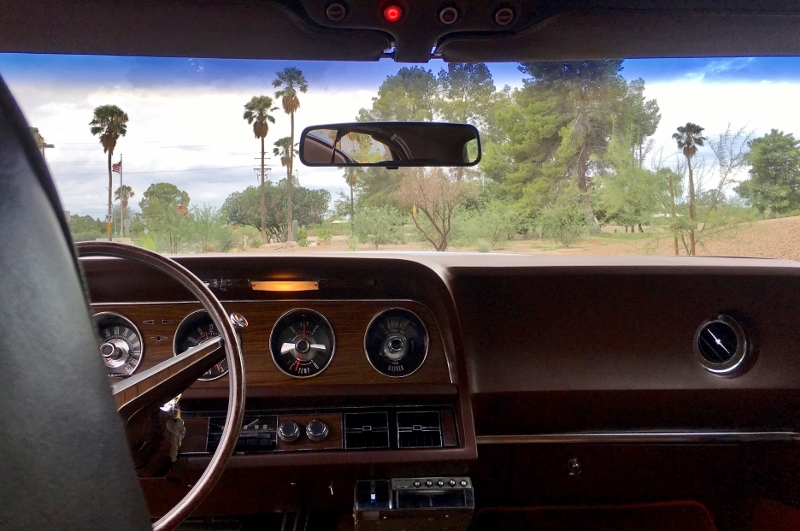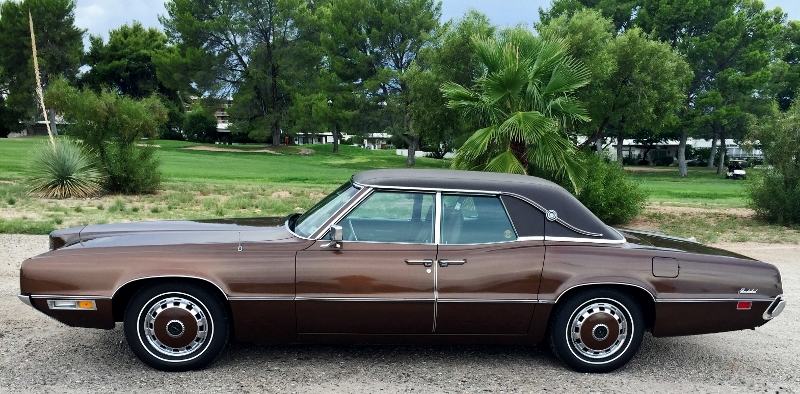In 1971, the Thunderbird achieved peak plumage
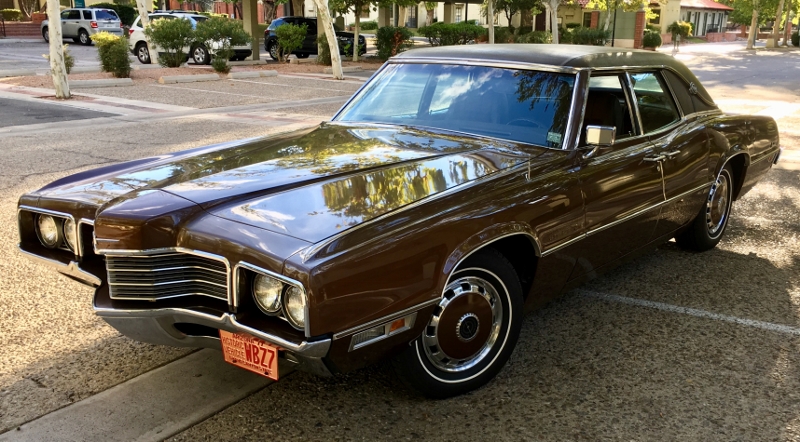
The famous Ford Thunderbird underwent multiple personality changes throughout its fifty-odd year existence. What started out as a two-seat personal-luxury convertible had, by the time the fifth-generation Thunderbird debuted in the autumn of 1966, become a much different automobile. Sure, it was still a personal luxury car, and loaded with luxury features, including concealed headlamps for the first time. However, there was one glaring omission for first time in T-Bird history: A convertible version.
Why? Well, the writing had been on the wall for some time. Tastes had been changing as the Fifties gave way to the go-go Sixties, and topless T-Bird sales had been steadily declining. This trend would only increase in severity. By the early ’70s nearly all the topless cars built in the Land of the Free were gone, or on borrowed time. But what to replace it with? The answer was—believe it or not—a four-door sedan. But not just any four door sedan.
The 1967 Thunderbird Landau Sedan was pretty impressive, at least in your author’s opinion. It was a kind of sportier junior Continental, right down to the center-opening doors. Why not? The iconic suicide-door Continental had originally been designed as a T-Bird. There could be no harm in returning the favor. And why not ditch the folding roof, while we’re at it? Convertibles in general had dropped in desirability with the advent of factory air conditioning. You could now keep cool without folding and unfolding a fabric top, and no more worries about leaks and drafts-or someone breaking into your car by slicing the canvas top open. And if you purchased a hardtop coupe, you could enjoy most of the style, and some of that open-air feeling, in a less demanding package.
While these cars weren’t quite as flashy and sporty as the earlier T-Birds, they were still distinctive in their way, and great to drive, by all accounts I’ve heard. So much so, that most of the 1967-71 Thunderbirds had the bark beaten off of them and were unceremoniously crushed before the ’80s dawned. After all, there was no convertible, and they weren’t quite as special as the 1957-66 models, right?
Well, perhaps—if you’re one of those folks who follow the most common denominator. Say, for instance, 1955-57 T-Birds, 1955-57 Chevys, 1965-66 Mustangs, and the ever-present 1969 Resale Red Camaros with LS1s and questionable aftermarket wheels? Personally, I like the more eclectic, lesser-seen vintage rolling stock. And really, when was the last time you’ve seen a 1967-71 T-Bird, let alone the scarce four-door Landau?
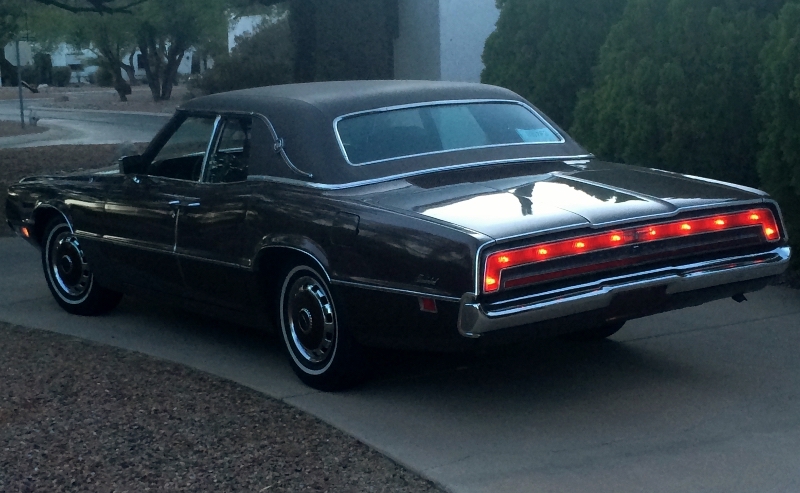
(As a matter of fact, if I may digress for a moment, I would love to see a “No Fricking Camaros, Mustangs or Corvettes” car show. Sure, I like Camaros, Mustangs and Corvettes too. But you sure see a lot—and I mean A LOT—of them at shows, don’t you? Personally I’ll walk past a row of red muscle cars to check out a 1971 Cadillac, 1977 Caprice or 1969 Fury III. But, to each their own! Now where was I?)
Back in 1968, Ford hired away Semon Emil “Bunkie” Knudsen away from General Motors, and he immediately made his mark in the styling of FoMoCo products, starting with the 1970 models. In addition to approving the soon-to-be-released 1972 Continental Mark IV, he also added, as was his wont, Pontiac-like noses to several of Henry’s products, known informally as the “Bunkie Beak.” It appeared on the facelifted 1970 Thunderbirds (which also lost their hidden headlamps that year), and gave a rather Pontiac flair to the ‘Bird’s beak. But then, why not have a beak on a car named Thunderbird?
The 1970 Cougar got a beak as well, replacing the Schick razor grille seen in 1967-69, but it had nothing on the 1970 midsize Montego and Cyclones over at Lincoln-Mercury dealerships! I imagine by 1975 or so most of these had crunched center grille sections. That protruding center section was rather vulnerable to front-end mishaps.
1970 full-size Fords received them as well, though it was less pronounced than as seen on the Thunderbird. And a bit less prone to damage than either the Montegos or Thunderbirds.
The four-door Landau was kind of an odd duck. I personally love it, but it seems that other than a little action in its early years, it just didn’t take off sales-wise. While I miss the most excellent hidden headlamps the 1967-69 T-Birds had, the 1970-71 with the new nose was really, really cool. In its final year, 1971, only 6553 sedans were built.
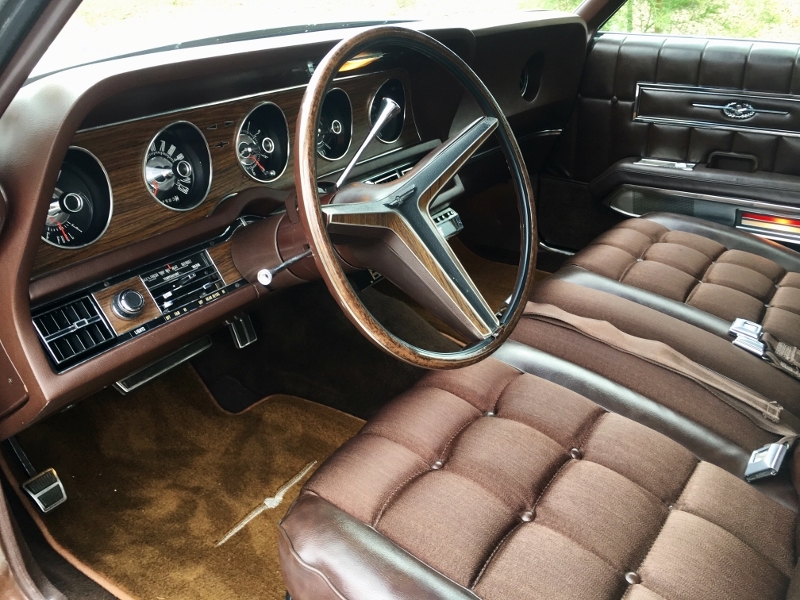
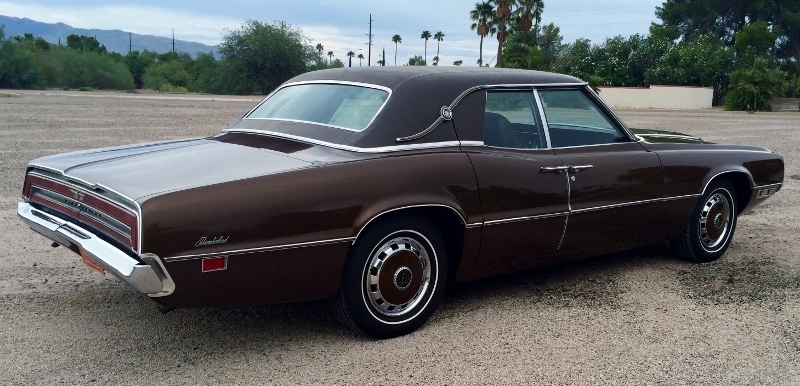
Why? Well, this generation of T-Bird was by 1971 in its fifth year, and despite the new nose in 1970, it still had much of its 1967 DNA, at least from the windshield back.
In addition, these cars were not cheap. The 1971 Landau sedan started at $5516, at a time when the then-new Pinto started at about $1900. And if that wasn’t enough, completely redesigned personal-lux yachts were introduced over at rival GM in Toronado, Riviera, and Eldorado flavors.
Within the Ford family, the Continental Mark III was also finding lots of buyers, and despite being based on the Thunderbird itself, oozed swank even more than the T-Birds-and had a more prestigious nameplate to boot. But there was still loads of flair and luxury to be had in the Thunderbird. Yet like every other Detroit automobile in 1971, even the upper-tier cars carried a long list of options. And as a member in good standing in the Grosse Pointe country club set, most T-Birds were loaded with extra goodies like air conditioning ($448; with climate control $519), six-way power seats ($207), cruise control ($97) and power windows ($133).
It was indeed a different time, when high-end cars still had to be ordered with air and power windows, when today’s cheapest econoboxes have them standard, but a la carte was the order of the day. And hey, just look at those seats!
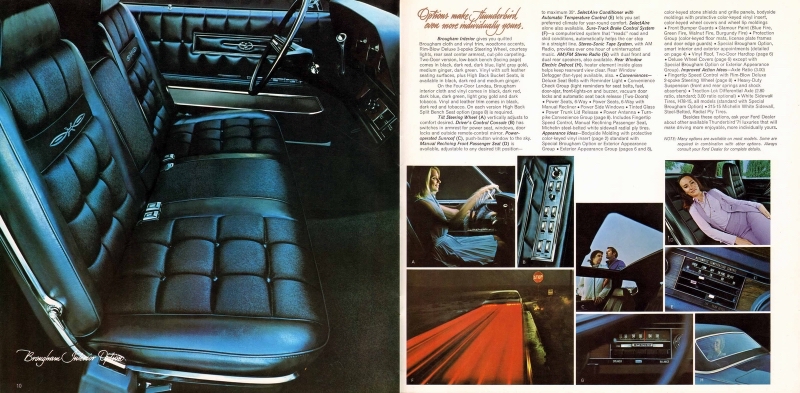
This was the Brougham Interior Option, and as most of you know, in the ’70s, Brougham meant luxury, button-tufted, velour-lined, over-the-top, unapologetic damn-the-consequences AMERICAN luxury! And while you might have had to throw a few bucks in for the proper comforts and conveniences, all 1971 Thunderbirds came standard with a 360-hp 429-cubic-inch V-8 engine backed up by a Cruise-O-Matic automatic transmission. After all, what else would you want?
Our featured car for today, a 1971 Landau sedan in Dark Brown Metallic, was owned by a friend of mine, Ray Freyer. I had always admired the car on the various Facebook car groups he and I were both on, and a couple years ago he was kind enough to email me several great pictures of it. He loved that car. It was a garage queen, and usually only came out on nice days. (Though he did get caught in the rain once, an incident he deemed worthy of recounting.) It is pretty much like new, and as one of the less frequently seen generations of Thunderbird, attracts lots of attention.
Unfortunately, Ray passed away this past June. He was a good guy, a fellow car nut, and I’ll miss him and his posts on the American Brougham Society group and elsewhere. Whenever I see a 1970-71 Thunderbird, I’ll be reminded of him and his passion for this beautiful car.
For 1972 there would be a new, even larger Thunderbird. The four-door was unceremoniously axed, with a heavily Mark IV-derived coupe being the sole offering. And so it would remain a two-door the rest of its days, with nary a four-door ever seen again. So far, at least!
